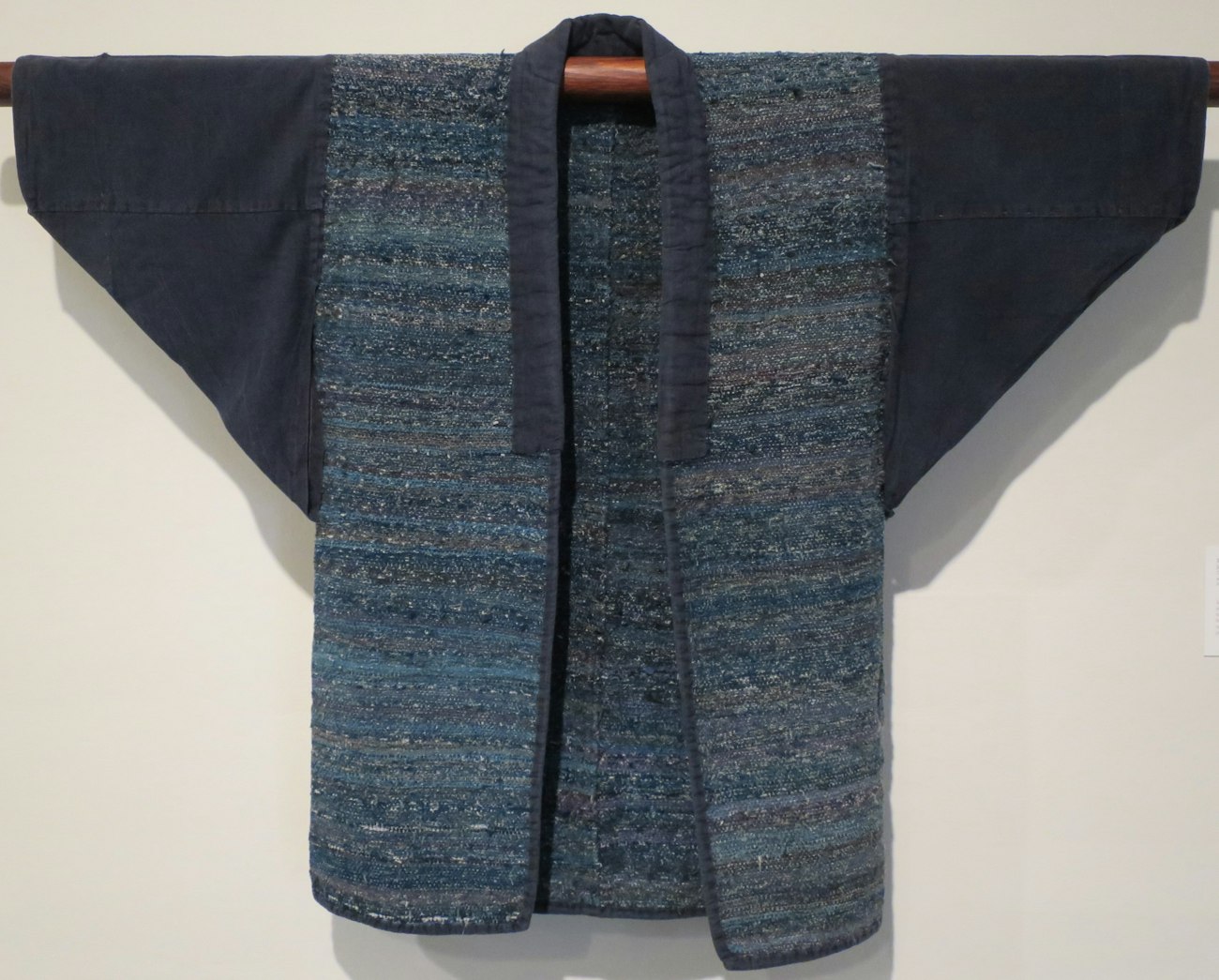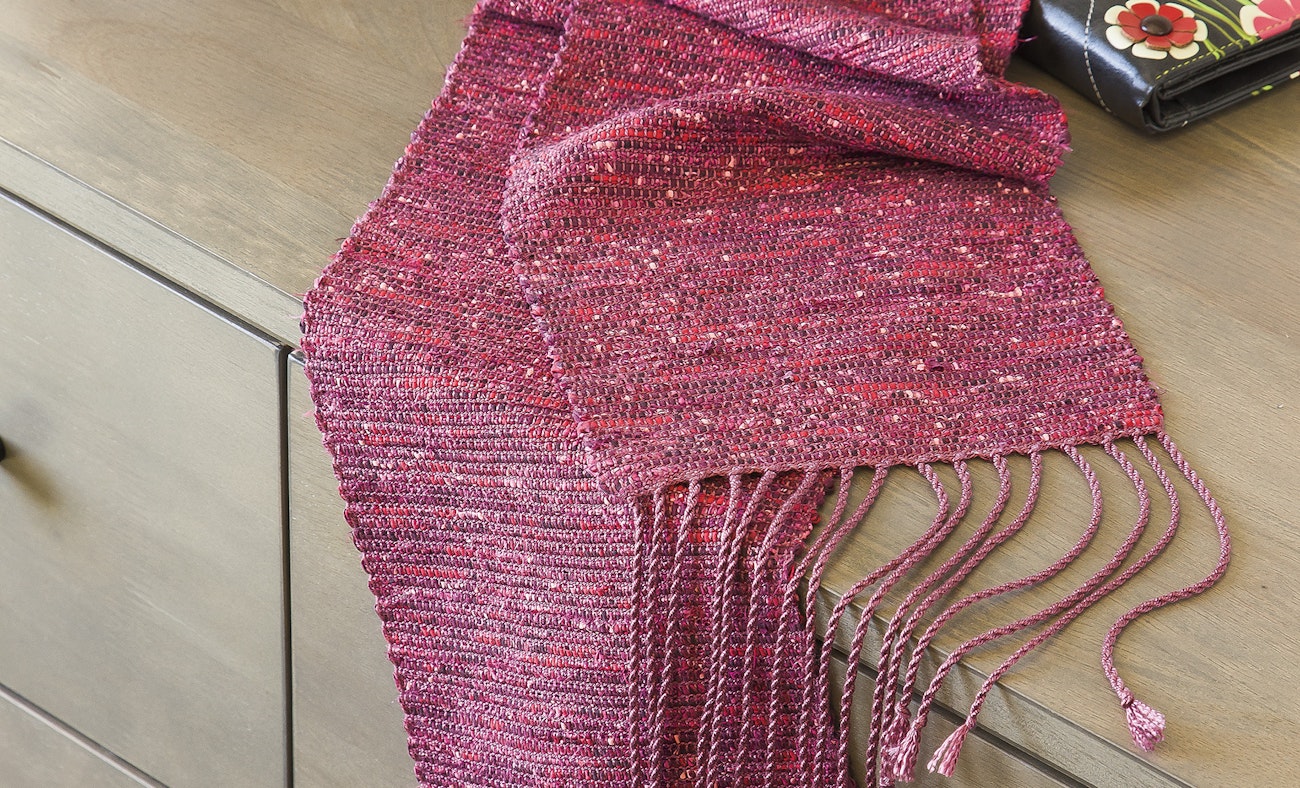Do you have an old blouse hanging in your closet that you just can’t throw away? Maybe it carries fond memories of a special occasion, or it’s the perfect shade of your favorite color even though the cuffs are a little shabby. Why not use it to weave something new to love, using the Japanese technique of sakiori?—Handwoven editors
A World Without Cotton
Imagine you live in a very different kind of world than most of us inhabit today. There are no thrift stores full of an endless supply of cheap clothing and fabric. There aren’t any affordable stores for new clothing either—fast fashion is a foreign concept, and a superstore like Target inconceivable. Lengths of fabric are only available to the very wealthy and their clothing designers.
Worst of all, there aren’t any fleece-bearing animals or cotton-bearing plants anywhere to be found to help you create your own cloth. How would you clothe yourself?
This was the traditional reality facing people in Japan. Indeed, most Japanese wove fabric using wild hemp, mulberry, nettles, and other rough bast fibers to clothe themselves, even for outdoor work in the dead of winter. Only the very wealthy had access to warmer (and more comfortable) silk clothing.
Sakiori’s Beginnings
By the late 15th century, imported cotton was available and within the budget of the wealthy in Japan but still well beyond the price range of everyone else. Cotton became more widely available in the 19th century—but for most people there was a catch. It was only after new cloth had been sewn into garments, worn until tattered, and finally sold to rag merchants that common people could get their hands on precious cotton. The smallest, most worn of these rags were used as weft woven into a hemp warp to make thicker cloth that could be sewn into warmer clothing.
This tradition came to be known as sakiori, from the words saku (to tear or rip) and oru (to weave). Creating it was usually the work of the woman of the house, who sat down to sakiori weaving after spending all day doing hard manual labor, preparing food for the family, and caring for children.

A sakiori work jacket from the Honolulu Museum of Art. Photo by Hiart
Clothing made using the repurposed cotton was vastly warmer, softer, and more durable than the rough linens that could be made from Japan’s natural fibers. This style of textile creation was nearly ubiquitous until the mid-20th century, when the rise of inexpensive manufactured clothing led sakiori to be perceived as old-fashioned—or as a sign of deep poverty. To read more about the history of sakiori and see more photos, check out the March/April 2015 issue of Handwoven!
More on Modern Sakiori
Today, sakiori is seeing a resurgence as an eco-forward and economical way of weaving, and you don’t need to track down cotton rags to weave it. Here are some resources that will give you a glimpse into the technique, and projects to explore.
 These sakiori obis would have been worn as sashes, as part of traditional Japanese dress. Photo courtesy of Tom Knisely
These sakiori obis would have been worn as sashes, as part of traditional Japanese dress. Photo courtesy of Tom Knisely
- Tom Knisely writes about weaving with old textiles to give them a new lease on life—in sakiori, in rag rugs, and in catalogne blankets.

- Amanda Robinette’s charming Western Sakiori Scarf project, shown above, uses silk from two blouses she found in a thrift store for weft. You’ll find her project on page 46 of the March/April 2015 issue of Handwoven. If you’re unsure about how to prepare silk garments for use in sakiori weaving, you’ll find Amanda’s full instructions here.

If you’re looking for something different, consider Dinah Rose’s Sakiori Vest Project (above) from the September/October 2008 issue, on page 48. It uses fabric from an old kimono as weft, and repurposes the kimono’s original collar band as trimming.
Anita Osterhaug reviewed a book titled Weaving Western Sakiori and found it to be full of historical background, as well as tips, techniques, and projects to weave. Read what she had to say.
Originally published June 24, 2016; updated Sept. 3, 2025

